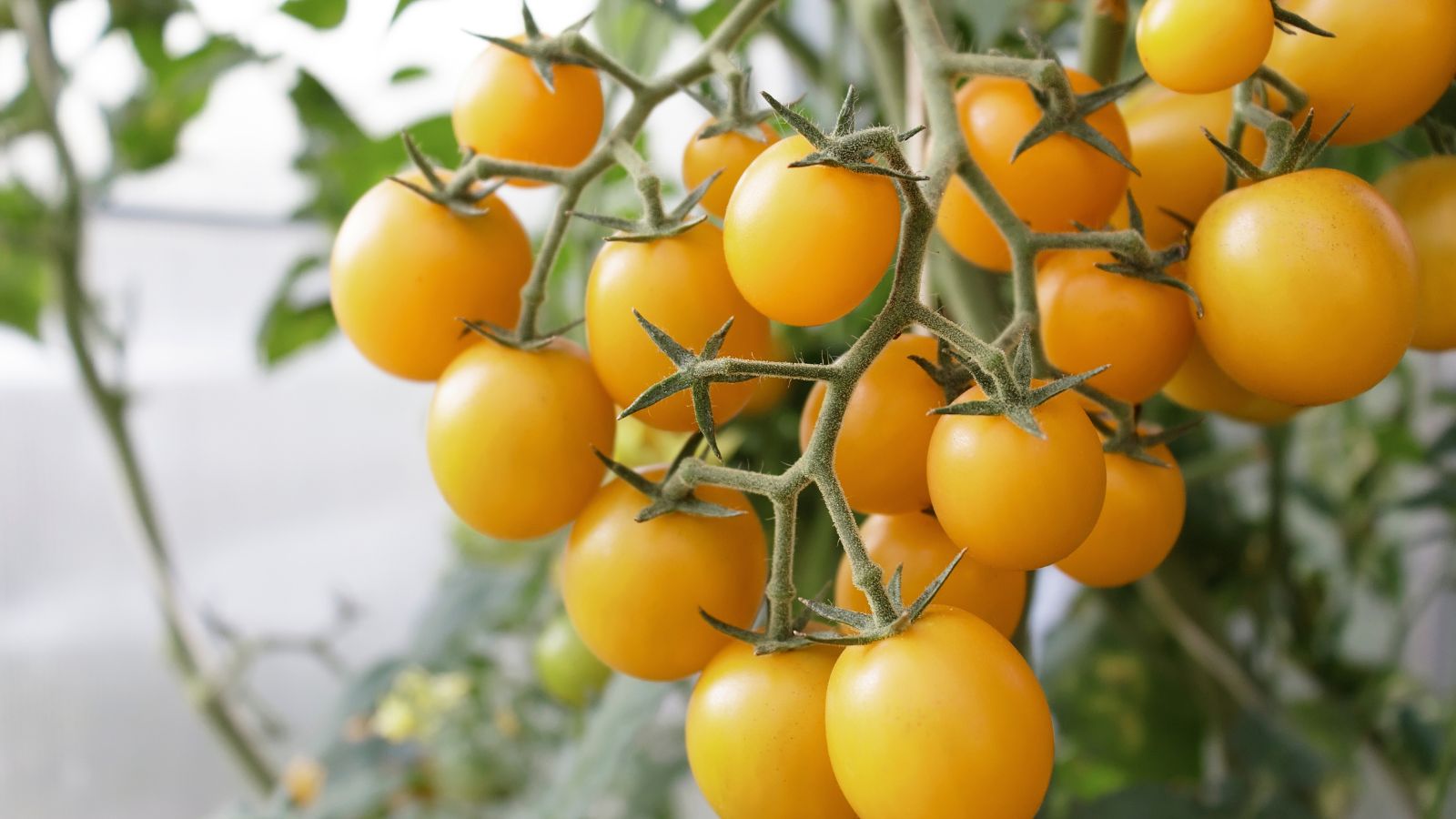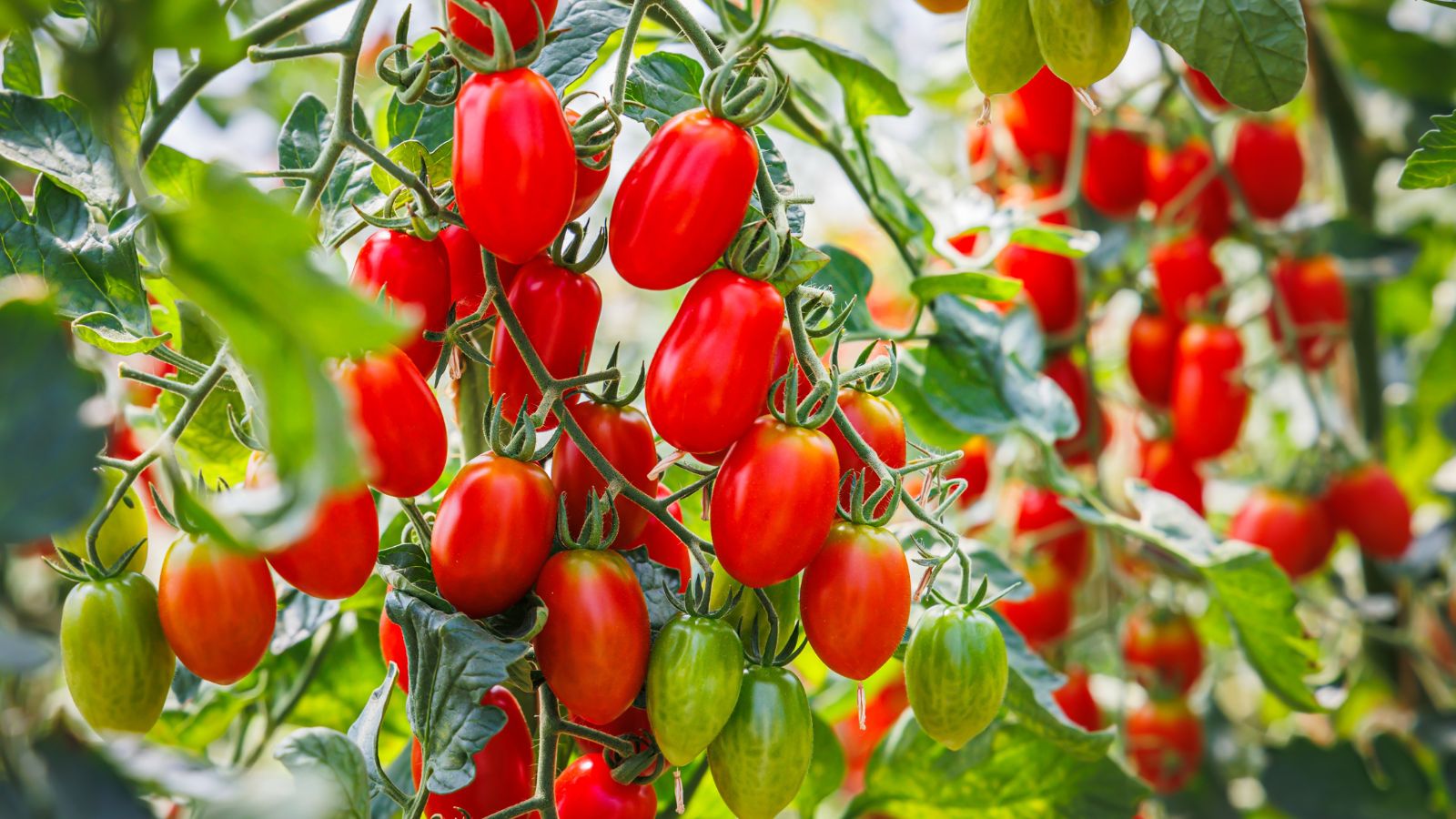13 Best Tomato Varieties For Making Salsa

I love salsa. As I look at my Botanical Interests tomato varieties, salsa is definitely on my mind. I want to find the best, meatiest cultivars that blend nicely with onions, cilantro, garlic, and spicy peppers.
Thinking about which varieties to grow is always a fun puzzle. It starts in winter for me, as the spring here in North Texas comes on strong. Only established tomato plants survive the initial onslaught of heat.
There are tomato-like plants that fit the salsa profile, too, and we’re covering a couple here. But in the vein of selecting an assortment of salsa tomatoes for next season, here are 13 to choose from. All of these, when roasted, blended, and combined with aromatics, make a salsa you won’t forget.
Supremo Bush Roma Tomato


Supremo Bush Roma Tomato Seeds
Cream Sausage Bush Tomato


Cream Sausage Bush Tomato Seeds
San Marzano Roma Pole Tomato


San Marzano Roma Pole Tomato Seeds
What Makes a Good Salsa Tomato?


When it comes down to it, any tomato works for salsa. However, there is a hierarchy of which are most appropriate for salsa. When you look for a variety that fits best into a salsa profile, look also for those that are great in sauces.
The foundation of a good salsa is plenty of tomato flesh. While you can use a beefsteak or a slicer, these produce a more watery salsa. Liquidy salsas have their place, but my preference is for a deeply-flavored, rich salsa. If you want a thicker salsa but only have watery slicers on hand, add some tomato paste.
Paste tomatoes tend to be the preference for salsas. While you can reduce a watery salsa with heat, paste varieties make it possible to simply blend and enjoy. The most beloved paste tomatoes include romas and San Marzanos, which are famous for their use in sauces. These are perfect analogs for salsa too.
‘Supremo Bush Roma’


This determinate variety is highly productive, providing a crop of one and a half to two-inch wide fruits within 68 days from transplanting. ‘Supremos‘ take on the classic Roma form, as oblong fruits that have hearty flesh and few seeds. These are my go-tos for salsa-making.
The benefits supersede the harvest as well. These plants have incredible disease resistance against three races of fusarium wilt, Verticillium wilt, root knot, bacterial speck, and spotted wilt. If you live in an area where tomatoes are prone to pests and diseases, this is a great choice.
‘Cream Sausage’


Little yellow, roma-like tomatoes are perfect for adding contrast to your salsas. For this, choose ‘Cream Sausage.’ Another determinate variety, these tomatoes are best harvested when they’re about three inches long. Their sweet flavor and substantial body make them a great variety for a chunky, rich salsa.
Grow these in your raised beds, or even in a container. They won’t require much trellising and produce in about 80 days after transplanting. Get them in the ground well after frost passes to prevent any damage. These are particularly frost-sensitive.
‘San Marzano Roma’


For those who like a classic Roma, but want more than ‘Supremo’ harvests give, pick an indeterminate variety, like ‘San Marzano.’ Known as the “mother of all paste tomatoes”, this heirloom has been popular in home gardens since the 1920s. It’s likely the tomato that other paste tomatoes were bred from.
The fruit of this plant is roughly three to four inches long at maturity, and production begins 70 days from transplanting. The benefit of an indeterminate type is that the harvest lasts all summer long. If you live in a warm climate, you may even see a bumper crop in fall.
‘Amish Paste’


Much like Romas, plum tomatoes are great for a chunky, flavorful salsa. ‘Amish Paste’ is hailed as one of the best for sauces and salsas. The fruit reaches two to four inches long and holds a sweet and tangy flavor that heightens tomato salsas to the max.
As indeterminate plants, they need plenty of support. But you’ll reap the rewards of growing them throughout the season. This plant won the Slow Food USA Ark of Taste award. By growing some, you support the survival of this heirloom in the years to come. Save your seeds for next year, too!
‘Italian Gold’


These lovely, plump, meaty tomatoes aren’t exactly gold – they’re more a vibrant orange. But they’re one of the best for salsa making, adding a delicious, sweet flavor. With few seeds, what more could you ask for?
As a determinate tomato, it won’t grow the entire season, but you’ll need support for its four to five foot vines. Expect to see yellowish-orange fruits developing in 75 to 90 days. While it’s technically a Roma, it has a bit of a plum tomato shape. These resist cracking, and they’re a lovely sight in the salsa bowl and on the vine.
‘Italian Roma’


There aren’t a ton of determinate varieties on this list, but thankfully, this classic Roma is! Topping out at three feet, grow ‘Italian Roma’ in containers, raised beds, or in the ground. In about 80 days from transplanting, you’ll have firm three-inch fruits that work well in salsa.
If you want to have multiple harvests of this tomato, succession plant your seeds a couple of weeks apart. Any extras you have on hand can be canned, pasted, or even thrown into another batch of spicy, delicious salsa.
‘Hogheart’


This variety is named after its shape: that of a hog’s heart. With a wider top and pointed tip, these bright red tomatoes (sometimes with yellow bands around the shoulders) are touted as one of the best for delicious pastes, sauces, and salsas.
Hoghearts were brought from Italy to Massachusetts in the early 1900s. Then they were taken to the 1988 Common Ground Fair in Maine, and their popularity soared. Producing six to eight ounce tomatoes, they can either be quite stout or shaped more like a banana pepper. They take about 80 days to produce from transplanting.
‘Granadero’


One of the most famous indeterminate plum varieties is the ‘Granadero.’ This five-foot vine grows some of the smoothest ovular USDA organic fruit late in the season. If you like uniformity, this variety covers that to a T.
Its indeterminate nature means you’ll have plenty to enjoy throughout the season. With high disease resistance, these plants handle Fusarium wilt, tomato mosaic virus, and Verticillium wilt with ease. Add to that intermediate resistance to nematodes and tomato spotted wilt virus, and it’s kind of a no-brainer!
‘Opalka’


This tomato originated in Poland in 1900, and made its way to North America via Carl Swidorski, who was an immigrant and a co-worker of the famous tomato breeder, Carolyn Male. It’s a rare variety that produces few seeds, so if you decide to grow it, save them!
The limited seeds, coreless nature, and dry flesh of Opalka are what make it an excellent paste and salsa tomato. These elongated fruits develop throughout the season, on wispy but substantial vines. Grow this one to have a piece of history in your garden. Carolyn Male was a long time friend of famous tomato breeder, Craig LeHoullier.
‘Oxheart’


Also known as ‘Cuore Di Bue‘ (Italian for ox heart), this slicer doubles as a great paste tomato. It’s similar in shape to Hogheart, and has similar characteristics, including less seeds and dense flesh. It’s sometimes called “the pear of Liguria,” due to the northern Italian region where it originated.
It takes 70 to 85 days from transplant for the fruit to form. Once they are about six ounces, you can start your harvest. Leave some on the vine to reap the reward of 12-ounce tomatoes that shine in a salsa, especially after you roast them.
‘Roman Candle’


These crack-resistant yellow fruits are almost banana-shaped. As romas, you can expect substantial, thick flesh and few seeds. It’s a mid-season tomato, so get your trellises ready early in the season. This indeterminate vine grows up to eight feet tall.
‘Roman Candle’ wasn’t bred, but emerged as a spontaneous mutation of the beautiful, striped ‘Swenson’s Speckled Roma’. Tomato breeders Jeff Nekola and Sur Gronholtz managed to stabilize and name the variety. Thus we have this delicious golden roma to grow in our gardens today. Add this one to your salsa for pops of golden spicy goodness.
‘Purple’ Tomatillo


We’ve discussed the contrast a yellow fruit brings. Now let’s talk about one of my favorites for making salsa. It’s not a tomato, though. And it’s purple! Purple tomatillos are filled with nutrition, with plenty of antioxidants and anthocyanins that regular tomatillos and tomatoes don’t have. Their sweet flavor makes them perfect for pairing with mango or pineapple, and delicious onions and herbs.
If you live in a place where summer heat halts tomato production, tomatillos are a great option. These withstand heat much better than their tomato cousins, and continue producing even in triple digits. Harvest them when the husk splits, and get ready to have tons on hand.
‘Grande Rio Verde’ Tomatillo


Even though we’re still not talking tomato varieties, plain old tomatillos deserve a mention. ‘Grande Rio Verde‘ is your typical tomatillo, simply put. As for both of our tomatillo varieties on this list, you’ll have a much better harvest if you grow more than one plant at a time. This ensures higher pollination rates.
I can’t skip a green salsa, and having tomatillos that can stand the heat here in Texas makes what is deemed the midsummer “Dead Zone” seem not so dead. Being able to grow them in containers sweetens the deal. What you should know about both tomatillos here is that they have a small harvest window. In that regard, after you pick them, freeze them, can them, or make a huge batch of salsa to give to friends.





